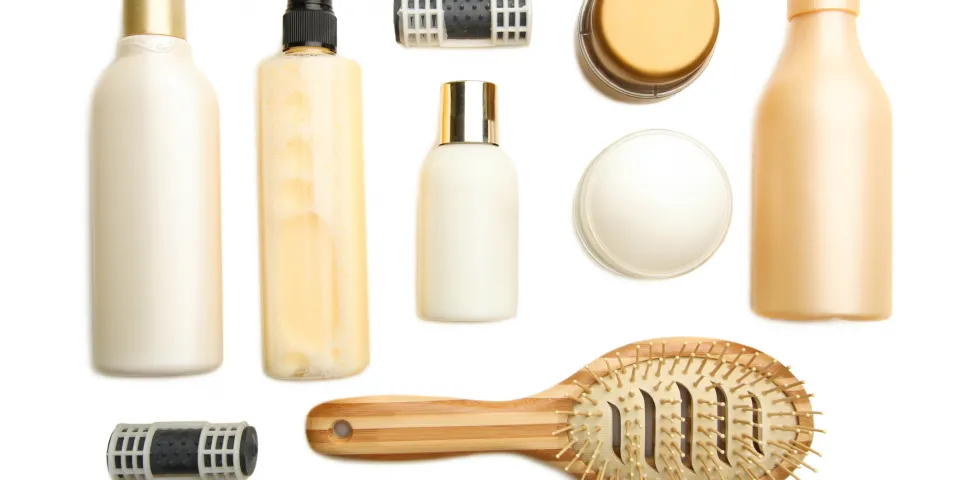Latest
Caring for Diverse Populations: Skin and Hair
May 6, 2021

Cultural competence and respect for diversity have always been important in the healthcare industry.
To align with these principles, Herzing University-Kenosha recently hosted the first of a series of virtual events about Diversity in Care. The series is designed to help answer questions about diversity and discuss how nurses and other healthcare workers can recognize and address differences. Nursing Professors Kristine Haggarty and Jamice Glass, who earned her bachelor of science in nursing (BSN) from Herzing Kenosha in 2018, led the discussion about key differences in patient care.
Here are some of the topics discussed, including the different forms of basic hygiene treatment:
What is cultural competence?
The American Hospital Association defines cultural competence in healthcare as the ability of systems to provide care to patients with diverse values, beliefs and behaviors, including the tailoring of healthcare delivery to meet patients' social, cultural and linguistic needs.
Nurses should continuously expand on their knowledge and competency and seek additional resources, while also recognizing gaps in their knowledge. This ultimately begins with individuals realizing their limitations.
“I had never considered myself to be culturally naïve in my ability to attend to the basic care and hygiene of my patients. I pride myself on caring for each of my patients as if they were my loved ones,” Kristine Haggarty said.
Haggarty has been a nurse for over 25 years and a nurse educator for seven years. However, even with her experience, Haggarty humbly expressed that even the best nurses can still learn more: “I realized that there was a lot that I didn’t know, so I started asking questions.”
How can nurses expand their scope of knowledge?
Nurses receive intense educational, clinical and hands-on training in college and on the job, but always need to keep learning. They must be willing to do research outside of their comfort zone, be ready to engage with their patients and admit when they don’t know something.
Nurses should keep their patient’s best interests at heart while acknowledging and being respectful of differences. It is okay to ask questions if you’re unsure about something. When it comes to basic hygiene or ethnic practices, it is okay to ask patients, “What is your routine at home?” so that you can potentially do the same while they are in your care.
Why are hair care and skincare important?
Good hygiene promotes health, comfort, self-esteem and well-being. Basic hair care and skincare are at the heart of good hygiene.
Nurses must be taught how to meet basic hygiene needs in culturally appropriate ways, but there isn’t one definitive way to provide care. Not all skin and hair can or should be cared for in the same way. Incorrect care can be damaging, harmful and could cause permanent breakage or hair loss.
For example, while the structure of all human hair is the same, there are differences in the distribution of lipids in the hair shaft that keep hair hydrated. The scalp produces sebum. This oily substance moves from the scalp along the hair shaft, sealing in moisture. The straighter the hair, the easier the flow, leaving straighter hair prone to greasiness and daily shampooing is appropriate. At the same time, curlier hair can be prone to dryness as the hair shaft is less saturated with lipids. The more porous or curly the hair type, the more moisture and conditioning are needed. Because curlier hair needs more moisture, it does not need to be washed as often as straight hair and could need a stronger conditioner – including a leave-in conditioner. The American Academy of Dermatology (AAD) recommends washing tightly coiled hair once a week or less. Washing more frequently can remove care products and some sebum, possibly drying out the scalp and hair.
Jamice advised how to wash curly hair: “I would never put a shampoo cap on patients with curly hair. However, if you are in a pinch, take shampoo and add baby oil to it before washing the patient’s hair. Afterward, put more baby oil in the patient’s hair. If baby oil or conditioner is not available, you could use Vaseline. Something is better than nothing.”
Like hair, different skin types need to be moisturized in different ways. Typically, you’ll treat someone’s skin the same way you would treat their scalp. If someone has a naturally dry scalp, there is a good chance that their skin will also be naturally dry. Especially after bathing, skin can get very dry, so it is a good idea to offer lotion to your patients.
“If we do not comprehend how to take care of the most basic of needs, how can we expect patients to trust that we understand how to take care of their more complex health issues?” Haggarty said.
Takeaways
Even though nurses are trained to care for every type of patient, there may be situations where it is difficult to determine what type of care a person needs. Furthermore, it may be difficult to accommodate some personal cultural desires while providing personal care. For example, a patient may not want to bathe using a certain type of soap. Nurses must learn how to balance cultural competence and the necessary skills to care for a patient while also acting as advocates for patients to ensure that healthcare facilities have a diverse supply of hygiene products to accommodate the needs of their diverse patient population
The L.E.A.R.N. model is one way to practice cultural competence. You should:
- L: Listen to the patient’s perception of the problem. You should allow your patients to explain their side of the problem and what they want you to do. Even if you do not agree with them, you should try putting yourself in their shoes. Showing that you are willing to listen can go a long way in helping your patient.
- E: Explain your perception of the problem. After you have listened to your patient, you should carefully explain the problem and what you need/want to do to help. Don’t use complicated terms and try to be sympathetic. If your patient interrupts, try not to get frustrated.
- A: Acknowledge and discuss differences and similarities. Try to find some common ground before you address the differences. If you can show your patient that you are on their side, they may be more willing to cooperate with you. Identify where there may be differences and try to pinpoint why these differences exist. This will show your patient that you have been listening.
- R: Recommend treatment. Once you have recognized key similarities and differences, recommend treatments that will allow you to accomplish what needs to get done while being respectful.
- N: Negotiate treatment. Work with your patient to see where you can both compromise, if possible. If you can work together, you will foster not only a healthy relationship with your patient but also further develop your cultural competence.
Ongoing education is key, and nurses should continuously ask themselves: “Do I have the cultural competence to provide top-quality care?”
Learn More About Our Nursing Programs
Bureau of Labor Statistics (BLS), U.S. Department of Labor, Occupational Employment and Wage Statistics 2023 / Occupational Outlook Handbook 2022. BLS estimates do not represent entry-level wages and/or salaries. Multiple factors, including prior experience, age, geography market in which you want to work and degree field, will affect career outcomes and earnings. Herzing neither represents that its graduates will earn the average salaries calculated by BLS for a particular job nor guarantees that graduation from its program will result in a job, promotion, salary increase or other career growth.
Latest
Recent Blog Posts
Subscribe to our Newsletter
Get the latest news you need to know, from study hacks to interview tips to career advancement. Have it delivered right to your inbox biweekly.








